Vintage Mystery Scavenger Hunt Item: Typewriter

This is only my second Sayers’ novel on the blog, the first being the contentious Gaudy Night (1935). Murder Must Advertise (1933) though is one of my favourite Sayers, with Lord Peter Wimsey going undercover at an advertising agency in order to investigate the seemingly accidental death of Victor Dean. What makes this death so suspicious is that before he died he was writing a letter to the owner of the advertising agency claiming that something decidedly criminal was going on in the agency underneath his nose. What this criminality was we do not know, but alongside Wimsey working in the office, there are night time escapades from a certain mysterious Harlequin, occurring within the riotous de Momerie crowd, a group of Bright Young Things. These two seemingly disparate worlds soon collide as the novel progresses and the body count quickly rises as Wimsey and his brother in law Inspector Parker unravel more of the mystery.
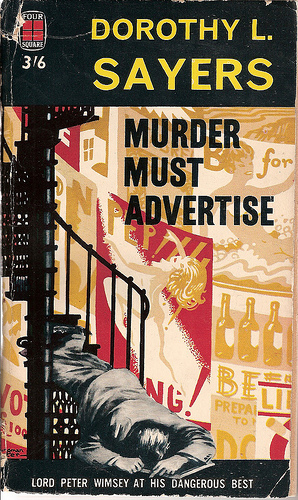
Wimsey Undercover
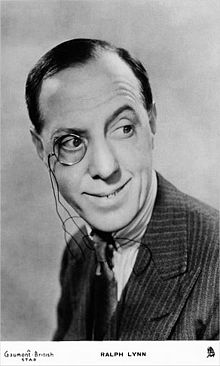
The setting of this novel is one of the things I love so much about it. This is one of those rare occasions where Wimsey is not in his natural setting where he can be his normal aristocratic self. In some ways I was reminded of Hercule Poirot in ‘The Veiled Lady’ (1923), where Poirot pretends to be a workman to do some reconnaissance on a house he later burgles. Although I do feel Wimsey is a bit more successful at adopting his new role as a copy writer named Death Bredon. Not that this means he drops his ‘silly ass’ persona, as one of the first things said about him, by a couple of typists, is that he is a ‘cross between Ralph Lynn and Bertie Wooster.’
Wimsey as Harlequin
It wouldn’t take Poirot or Holmes to guess that Wimsey is the mysterious Harlequin. During this re-read I think I paid more attention to Wimsey’s moments as Harlequin and I was sufficiently intrigued to do a little reading about the original Harlequin character to see what further parallels could be made. Firstly some of the plot events do match up with things the original Harlequin did. For example, whilst in his Harlequin role, Wimsey employs the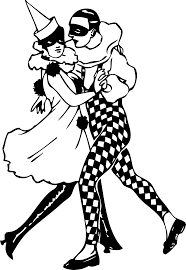 same ‘physical agility [and] … trickster qualities,’ (Wiki) such as when he dives from the fountain into the fish pond. Furthermore, he is also equally impish and mischievous. Additionally as good old Wikipedia states, the name Harlequin has French origins in the chronicles by Orderic Vitalis in the 11th century, ‘who recounts a story of a monk who was pursued by a troop of demons, [known as familia herlequin,] when wandering on the coast of Normandy at night’ (Wiki). Yet interestingly in Sayers’ novel it is Willis, disguised as a friar who is pursuing Wimsey in his Harlequin costume. But for me the biggest parallel in the countryside car chase scene where Wimsey, in his Harlequin role, pursues Dian – a femme fatale of the de Momerie crowd, who went around with Victor Dean for a time. The car chase sequence arguably mirrors another instance from the original French story where ‘Hellequin was depicted…roaming the countryside with a group of demons chasing the damned souls of evil people to Hell’ (Wiki) and in a way Dian’s meeting with Wimsey at the end of the chase, can be seen as the catalyst which leads to her own death.
same ‘physical agility [and] … trickster qualities,’ (Wiki) such as when he dives from the fountain into the fish pond. Furthermore, he is also equally impish and mischievous. Additionally as good old Wikipedia states, the name Harlequin has French origins in the chronicles by Orderic Vitalis in the 11th century, ‘who recounts a story of a monk who was pursued by a troop of demons, [known as familia herlequin,] when wandering on the coast of Normandy at night’ (Wiki). Yet interestingly in Sayers’ novel it is Willis, disguised as a friar who is pursuing Wimsey in his Harlequin costume. But for me the biggest parallel in the countryside car chase scene where Wimsey, in his Harlequin role, pursues Dian – a femme fatale of the de Momerie crowd, who went around with Victor Dean for a time. The car chase sequence arguably mirrors another instance from the original French story where ‘Hellequin was depicted…roaming the countryside with a group of demons chasing the damned souls of evil people to Hell’ (Wiki) and in a way Dian’s meeting with Wimsey at the end of the chase, can be seen as the catalyst which leads to her own death.
On a brief tangent Wimsey’s interactions with Dian, as Harlequin are interesting in that they involve a battle of wills, as attested to in the Homer allusion to Circe who turned Odysseus’ men into pigs:
‘Yes you’re different’
‘Only so long as I stay on my branch, Circe. If I come down to your level, I should be just like all the rest.’
In this instance, ‘all the rest’ means the other male admirers Dian has had and all of whom have had unfortunate deaths such as suicide or murder. Only by avoiding Dian’s wiles does Wimsey avoid the same fate.
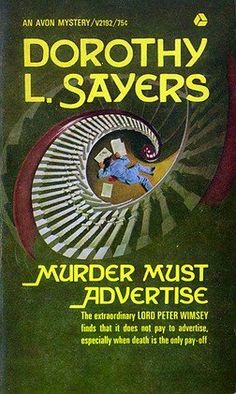
Back to the figure of the Harlequin though. In terms of his character Harlequin’s personality is meant to be ‘tremendously elastic… alter[ing] his behaviour to suit style, personal preferences, or even the particular scenario being performed’ (Wiki) and I think Wimsey also has such chameleon-like qualities. Overall though I think Wimsey probably mirrors later adaptations of the Harlequin character from the 19th century, where the figure is ‘more sophisticated’ and discards its’ clownish origins.
Wimsey’s Darker Side
Although at the start of the story Wimsey is described as having ‘a bonhomous soul, with the insatiable curiosity of a baby,’ his personal descriptions evolve into much darker ones, as the story progresses. For instance, Dian in a drug addled state says to him ‘I’m afraid of you… There’s a hanging man in your thoughts.’ Wimsey tries to shake this image off, joking that he ‘didn’t know […he] carried such a graveyard aura about with’ him. However, this is an image which comes back to haunt him and is erringly perceptive, as firstly his sister later on connects him with the figure of the hangman and then his actions at the end of the novel seem to fulfil the earlier presentiments. This increasing darkness in the novel is another reason why I like it. Additionally a darker or more troubling side to Wimsey can also be seen at times when he reflects on his identity, which seems quite unstable due to all the personas he is adopting and I think he dislikes the fact that he can’t enter the de Momerie group or the advertising agency as himself.

The Role of Advertising
One of the main things I took away from this re-read is that Sayers has a lot more to say about advertising than just using it as an excuse for word play. Don’t get wrong me there is plenty of word play, but I think to leave it there is to miss out on other ways advertising is weaved into the story. Firstly this novel although set in an earlier time to our own, is remarkably modern in its suggestion that advertisement pervades society and our lives. Secondly advertisement is consistently linked to Wimsey’s actions as Harlequin. This is epitomised when Wimsey says he ‘dived off a fountain into a fish pond’ because ‘it pays to advertise’ and he sees his attention grabbing antics as ‘advertisement’ to lure Dian in. One consequence of this helps to unite the two aspects of the plot in the book, but more importantly I think it also gives the world of advertisement and advertising a fantastical quality or a ‘dreamlike quality’ as Sayers puts it and when looking at the phantasmagorical figure of the ordinary/average man or woman portrayed in advertising, Wimsey notes a strong sense of unreality.
It is also through Dian that we see the grotesque or damaging side to advertising, as like the target of advertisement, she is always seeking something new and Wimsey, as Harlequin, is the advertiser in this instance, and his encouragement to her, to seek new thrills with him and ‘to want what you can’t get’, is certainly damaging to her health. This example led me to wonder whether Sayers in this novel is criticising consumer culture and advertisement’s role in it, a notion which seems to come through strongly when she writes:
‘He had never realised the enormous commercial importance of the comparatively poor… the vast superstructure of industry founded and built up… on those who, aching for a luxury beyond their reach and for a leisure for ever denied them, could be bullied or wheeled into spending their few hardly won shilling on whatever might give them, if only for a moment, a leisured and luxurious illusion.’
Such an almost polemical moment surprised me and it certainly implies a sense of manipulation and duping in advertisement, (linking it to the wider criminal plot in the book – though interestingly advertising is the one “criminal” never caught), and she certainly poses an interesting question when Wimsey wonders what would happen if we stopped using advertising.

The falseness of advertising is shown many times when the copywriting characters come up with new slogans but I found it interesting when it is also shown through the character of Wimsey when he has to advertise himself in the sense that he has to prove that Death Bredon and Wimsey are two people instead of one. He deliberately creates news item moments in order to do this.
Finally, the pervasiveness and sheer enormity of advertisement’s role in the society is highlighted in the novel’s concluding phrase: ‘advertise or go under.’ It made me feel like advertisement was being shown by Sayers as an unstoppable force which has been unleashed and can’t be withdrawn or retracted, which is reflected in some of the more dubious characters in the book who want to get out of their life cycle or the criminal enterprises they are in but realise they’re trapped, as withdrawal is the equivalency of death. Sayers has a great deal of fun with the advertising milieu in this novel, but I also think there is a darker or deeper side to it as well.
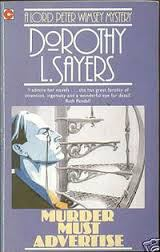
Genre Blurring
In contrast to other Sayer novels the genre style in this book is more complex. It is not pure detection, as there are some thriller strands and there are also elements of the fantastic through Wimsey’s Harlequin disguise. Although it has to be said that the thriller elements are often opportunities for humour and satire, as stories such as those published under the Sexton Blake named are joked around with for example, commenting on the implausible resilience and strength of the hero figure after numerous assaults. Furthermore, Wimsey and his sister joke about thriller conventions when they mockingly warn each other one evening:
‘And if the telephone rings, take care it isn’t the mysterious summons to the lonely warehouse by the river, or the bogus call to Scotland Yard.’
‘And if the door-bell rings, beware of the disguised gas-inspector and the plain-clothes cop without a warrant-card. I need scarcely warn you against the golden-haired girl in distress…’
Favourite Words
Bonhomous – Friendly and Cheerful
Buttinski – Someone who interferes in something
Gibus – Collapsible top hat
What was also amusing is how times have changed, with Yo-yos not being seen as purely for children, as a number of adults in the book quite happily use them, taking them to work or using them as part of a disguise.
Final Thoughts
So suffice to say this is still one of my favourite Sayer novels. I love the milieu and the dialogue and the characters, although seem many at the start, soon take on shape and individuality of their own. I love the narrative style, with its gentle comedy with human follies and misunderstandings, but the increasing darkness also makes this a great read. Even on a second read I still find Wimsey’s final comments to the killer moving and emotional.
Rating: 5/5

This has long been one of my favorite Wimseys as well, and I congratulate you on a thought-provoking and very thorough review. One additional point (if you mentioned it, I missed it and offer apologies): according to Wikipedia and others, early in her career, before her time as an author, Sayers worked as a copywriter at an advertising agency, S. H. Benson’s, in London. Evidently, she wrote what she knew!
LikeLiked by 1 person
No I hadn’t mentioned it, though was aware of it. No idea why I didn’t include it, but thankfully you have made up for my lapse of memory. But you are definitely right in that she used her past career experiences to the full in this book. Glad its’ one of your favourites too.
LikeLike
Well, you have included it in your previous post (Challenge to the Reader Quiz) !
LikeLiked by 1 person
A rare 5/5 rating! The only Dorothy Sayers title I’ve read is ‘Nine Tailors’, which I thought was a good read, if slightly on the long side. Perhaps I should try out ‘Murder Must Advertise’.
LikeLiked by 1 person
The Nine Tailors is my least favourite Sayers novel along with Five Red Herrings (though you might enjoy it more as it is looks a lot at alibis). I’d definitely recommend reading MMA, though the language style is not everyone’s cup of tea. Have His Carcase (2nd Vane mystery) is another Sayers novel with a strong detection element, which I think you might like. Though you may wish to read the first Vane mystery first.
LikeLike
So glad it holds up for you, even though I didn’t find a similar love for it myself. Though I do agree the insights into the advertising world are first rate – they made it bearable for me.
I’ve embarked on Strong Poison today…my second Sayers. I don’t think she’s ever going to be a firm favourite but I am enjoying this one more so far.
LikeLiked by 2 people
Fingers crossed this is a better read for you.
LikeLike
[…] ← What Sayers has to Say About Advertising, Amongst Other Things in Murder Must Advertise … […]
LikeLike
I very much agree with you: this is one of my favourite Wimseys too, and one that stands up to re-reading. It certainly always makes me feel that this is what office life in the 1930s was really like – I love those scenes. Arguments over the tea money, popping into other’s offices, borrowing the dictionary, demonstrating cricket bowling – it all sounds so real.
I enjoyed your analysis very much.
LikeLiked by 1 person
Thanks Moira! Always good to find another fan of this book and yes Sayers does make the world of work sound quite fun!
LikeLike
[…] disguises himself as Harlequin in Murder Must Advertise (1933) and when I recently reread this book I was intrigued by his Harlequin moments, as I think a […]
LikeLike
[…] The Red Thumbprint (1907), provide hours of entertainment, as supported by Dorothy L Sayers’ Murder Must Advertise (1933). Who needs the TV or an X-box when you can collect people’s fingerprints for an […]
LikeLike
[…] Murder Must Advertise by Dorothy L Sayers (Typewriter) […]
LikeLike
[…] Murder Must Advertise (1933) by Dorothy L Sayers, […]
LikeLike
[…] telling the truth. The advertising agency setting was a successful choice for Dorothy L Sayers in Murder Must Advertise (1933) and C. S. Forester’s Plain Murder (1930) and I can say the same is the case for Hull, […]
LikeLike
[…] bit like with Heyer, I wasn’t too sure which titles to pick for Sayers. I’ve already reviewed Murder Must Advertise (1933), Gaudy Night (1935) and Busman’s Honeymoon (1937), so I decided to look at some of […]
LikeLike
[…] publicity is used for this end. Gerr presents a very different setup from something like Sayers’ Murder Must Advertise (1933), but the publicity milieu is equally well conceived and I think the author captures the […]
LikeLike
[…] novels which receive their own individual analysis in this chapter are The Murder at the Vicarage, Murder Must Advertise, Police at the Funeral, Death and the Dancing Footman, Death of an Expert Witness and A […]
LikeLike
[…] L. Sayers’ Lord Peter Wimsey, particularly in his cases from the 1920s. Although a character in Murder Must Advertise (1933) does describe Wimsey as being ‘like Bertie Wooster in horn rims.’ Generally, I would say […]
LikeLike
[…] Plain Murder (1930) by C. S. Forester, whose enjoyable book was followed by the even more enjoyable Murder Must Advertise by Sayers (1933) and Murder Isn’t Easy (1936) by Richard Hull. However, such a setting does not […]
LikeLike
[…] crops up on a semi-regular basis in crime fiction. An example which springs to mind is Sayers’ Murder Must Advertise (1933). However, I think Véry utilises this trope in a very unusual and surprising way, which […]
LikeLike
[…] (although he is arguably more knowledgeable and intellectual than Bertie). In a later mystery, Murder Must Advertise (1933), Wimsey is described by a character as being ‘like Bertie Wooster in horn rims.’ But […]
LikeLike
[…] as the author themselves had worked in advertising previously (e.g. Dorothy L. Sayers’ Murder Must Advertise (1933)), but it is hard to say why artists get embroiled so regularly in murder cases, often as […]
LikeLike
[…] Peter Wimsey Omnibus: Murder Must Advertise & The Nine Tailors by Dorothy L. […]
LikeLike